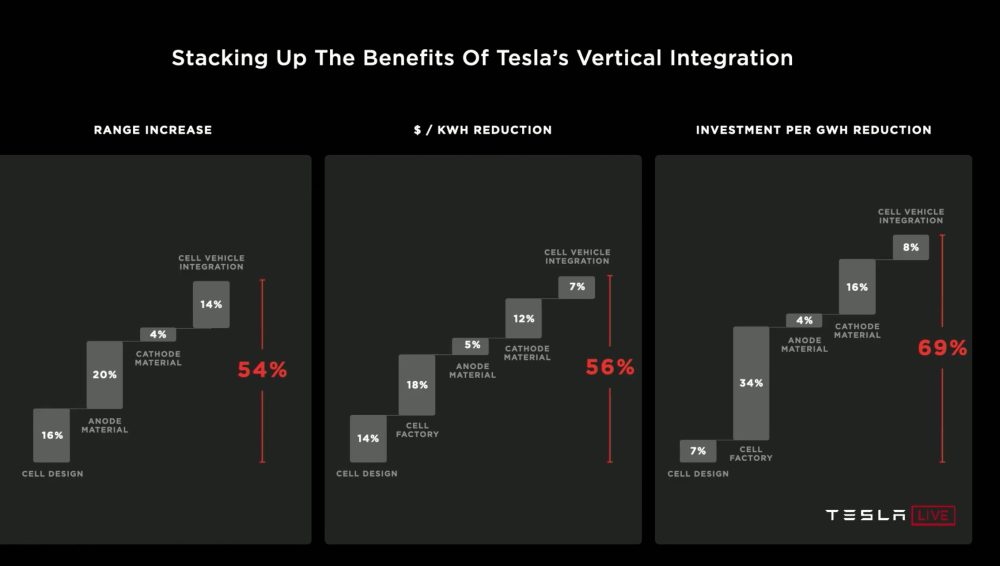I'll take the latter on that.
- Range is a result of energy (per pack), minus electrical losses, minus mechanical losses
- Cell cost numbers are in $/energy
- Factory costs are in $/energy (per time)
If these are not simultaneously applicable, there is a problem:
3 cannot be dependant on 2. If it were, DBE and increase in energy per cell bring almost nothing to the table (percentages are very similar). This is not logical.
3 and 1 cannot be linked. The manufacturing infrastructure cost does not impact vehicle efficiency.
2 and 1 cannot be linked. Having more kWh per pack would increase range. However, range is miles/wH (kWh/100km), not miles per $.
The cell is more efficent and lighter per unit energy, and the car is ligher due to pack design (with deoendancy on cell manufacturing):
Result: More range per kWh
Each cell hold more energy, the process steps are fewer, the supply chain is streamlined, and the factory amortized costs per cell are less (this is a linkage, but a small%):
Result: Less $/kWh
Each factory (both cell and vehicle) have multiple steps/ equipment removed and the quantity of cells is slashed (linked to cell design):
Less cost per GWh of build capacity.
Improvements are dependent on all the changes happening, but each aspect's improvement percentage stands alone.
Edit: finished post




